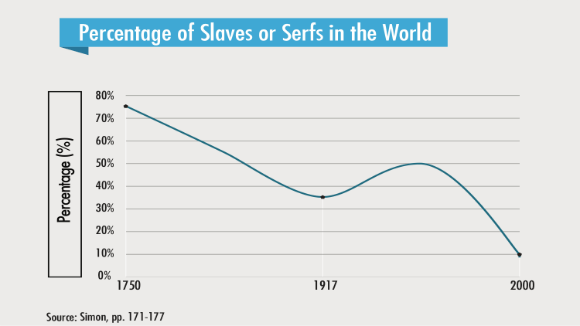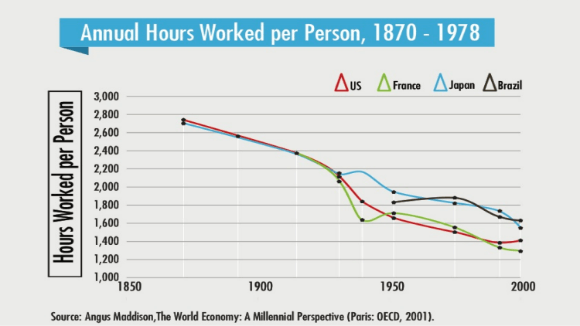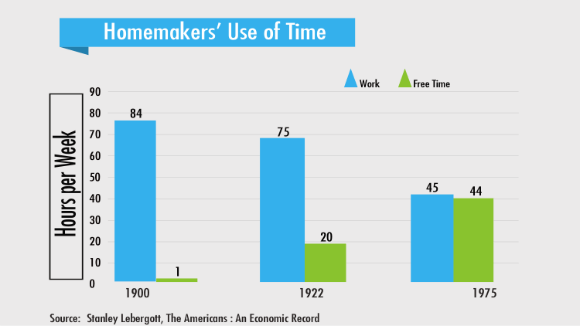Is technology making you work harder? Or giving you more time off?
Seriously, it feels like it’s enabling me to work around the clock! Heck, I’m writing this email at 37,000 feet on a Virgin America flight from DC to LA at 11 p.m. ET.
So that being said, I want to share the actual DATA with you about Work vs. Leisure.
This first blog in my “Evidence of Abundance” series is about an Increasing Abundance of Leisure. My goal, with your help, is to get the data out as far and wide as possible.
Evidence of Abundance: Work and Leisure
It’s easy to forget that for centuries — for millenia — the “workforce” was ALL of us.
A few people lived in luxury, but the vast majority were slaves and serfs who did the work. In 1750, 75 percent of people on the planet worked to support the top 25 percent.
Let’s look at the numbers. It’s extraordinary how this has changed over time.
 You’ll notice that by 2000, the global percentage of slaves and serfs in the world is down to 10 percent. As artificial intelligence and robotics come online, this number is going to drop down to zero.
You’ll notice that by 2000, the global percentage of slaves and serfs in the world is down to 10 percent. As artificial intelligence and robotics come online, this number is going to drop down to zero.
That’s how work has been redistributed and slavery nearly eradicated, but what about leisure?
The following chart shows us hours worked per person between 1850 and 2000. Over these 150 years, what we’ve seen is that the numbers have dropped literally by half — from 2,800 hours per year down to just above 1,400 hours per year. You’ll see data here for the U.S., France, Japan and Brazil. So basically we work half the time, but enjoy a massively increased quality of life (access to health, education, energy, and so on, as we shall see in future blogs).
 No shocker — France, of course, is the country that has the fewest working hours. But this is not by virtue of people wanting to work less — it’s by virtue of people being able to work less.
No shocker — France, of course, is the country that has the fewest working hours. But this is not by virtue of people wanting to work less — it’s by virtue of people being able to work less.
That’s an important distinction: being able to make a living and support your family by working 40 hours a week versus 80 hours a week.
Here’s another piece of data that I love. It shows the average amount of leisure hours that we spend in the U.S. for the average “homemaker.” Look at the difference in leisure hours spent between 1870, 1973 and 1990. Not only are we working less, we’re enjoying ourselves more. As we’re working toward this world of abundance, we’re able to increasingly enjoy leisure time.
 Weekly leisure time in hours is up to 58; yearly leisure in days is up to 125 and lifetime leisure in years is up to 35. That’s extraordinary.
Weekly leisure time in hours is up to 58; yearly leisure in days is up to 125 and lifetime leisure in years is up to 35. That’s extraordinary.
As we create this world of abundance, we work less, we create more leisure, and we live a better life.
If you’d like a video version of this blog to share on your social networks and with friends, click here. Your friends and family can sign up for this series at AbundanceHub.com. And if you want my personal coaching on these topics, consider joining my Abundance 360 membership program for entrepreneurs.
Charts courtesy of AbundanceHub.com
Image credit: Pexels



